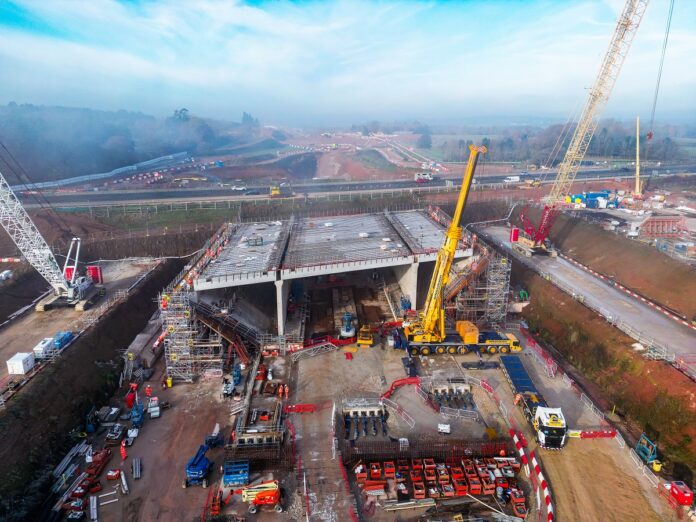Construction of a huge concrete box designed to carry the new HS2 high-speed railway line under the A46 Kenilworth Bypass in Warwickshire is nearing completion.
The 14,500-tonne box structure is being built on land next to the A46 rather than underneath it, to avoid the need for long-term traffic management measures.
The box is now nearing completion following the successful installation of 120 giant beams, ranging between 13 and 24 metres in length. A team of engineers worked around the clock to lift the beams into place using three giant cranes, completing the operation ahead of schedule in just 14 days.
The next phase of construction will involve completing the deck – the flat surface on top of the beams – and installing parapets. Then, in the spring, the completed structure will be slid into position under the A46 using an innovative technique.
This will involve a jacking mechanism that will push the box across a guiding raft at a speed of up to 2.5 metres per hour for a total distance of 64 metres.
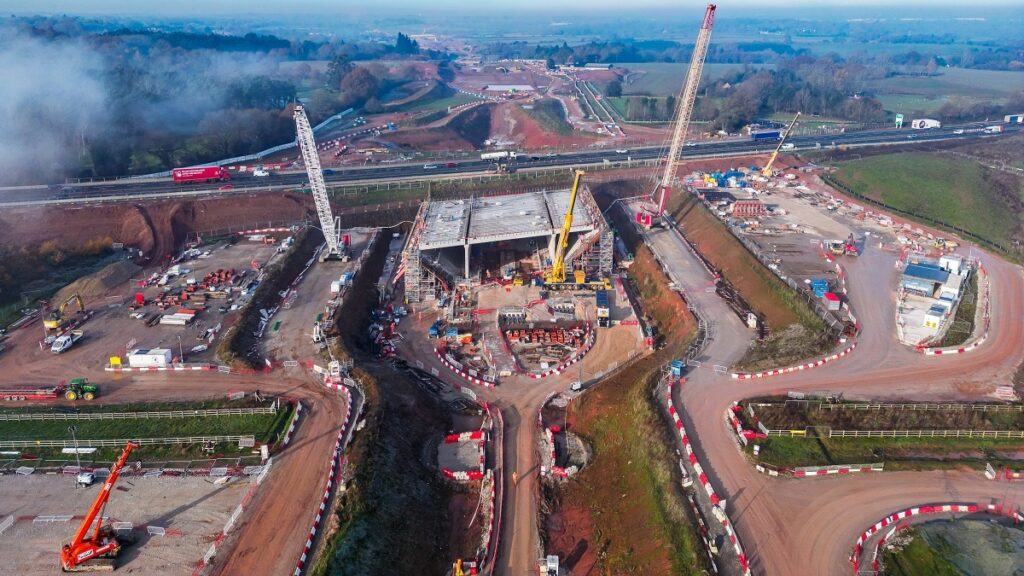
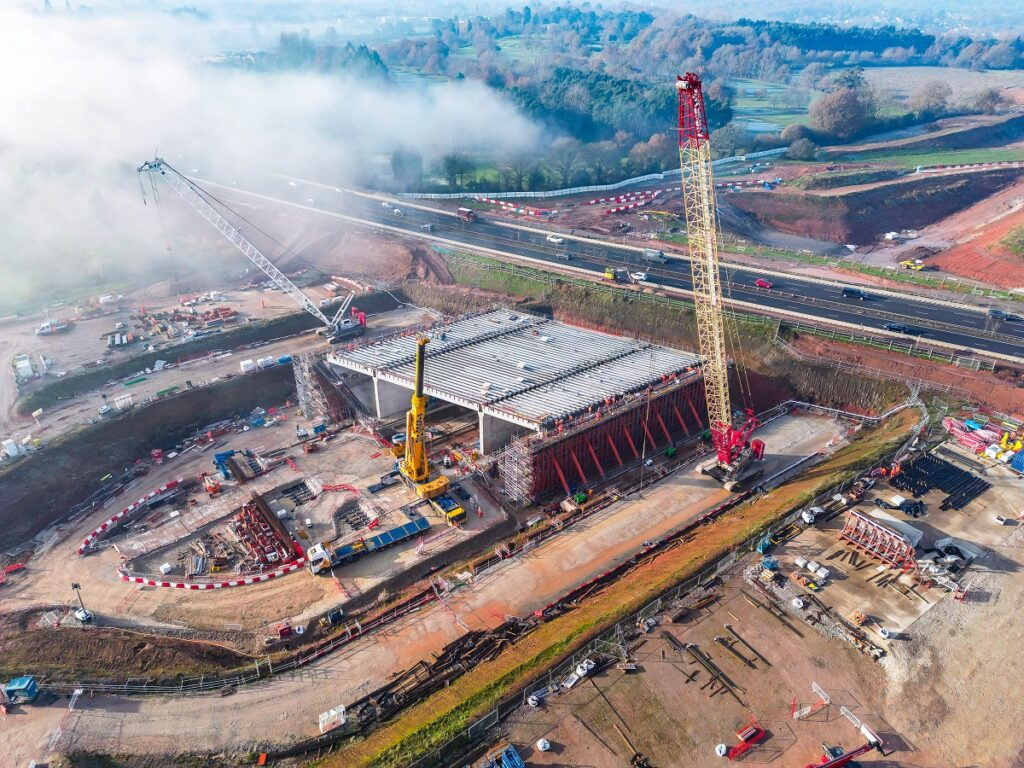
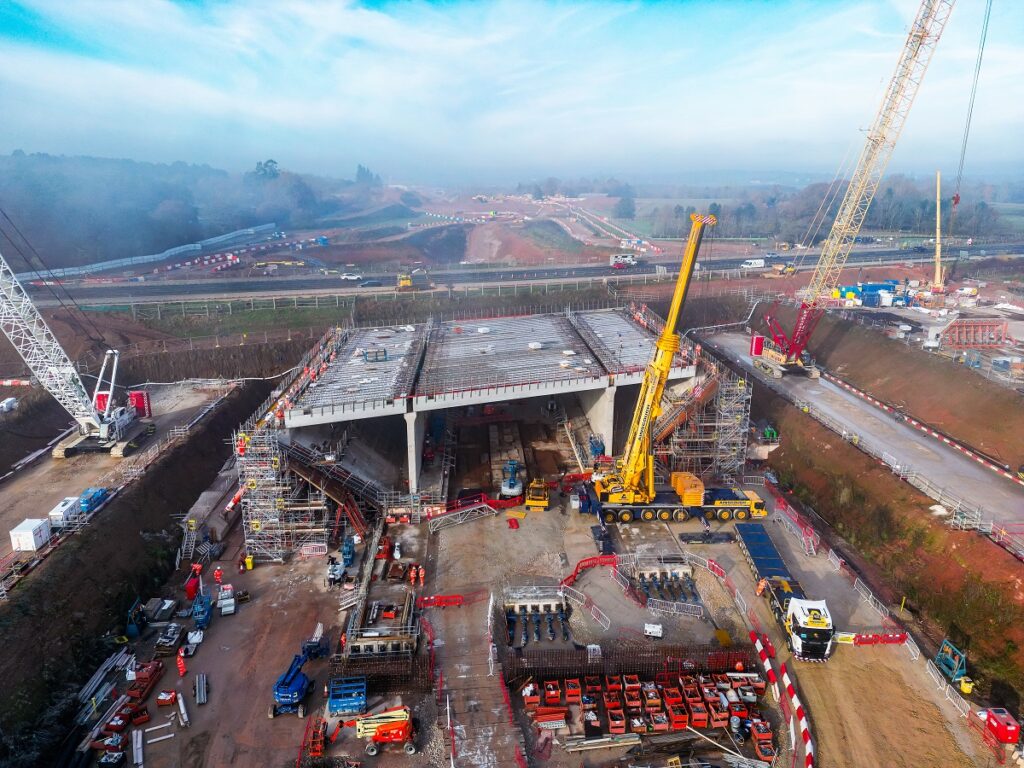
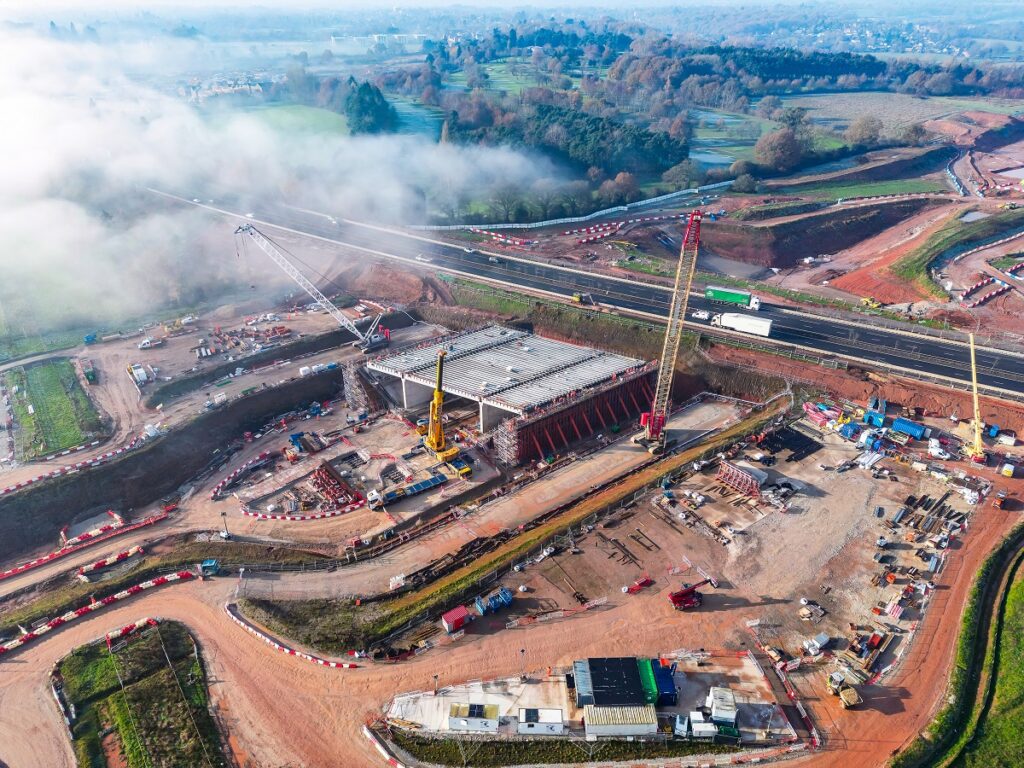
Road closures planned to move box into position
To prepare for the box slide, a section of the A46 between Festival Island (Coventry) and Thickthorn Island (Kenilworth) will be closed for two weekends next month. There will also be a full closure of the A46 Kenilworth Bypass in spring 2025 for up to three weeks to move the structure into position.
Vicki Lee, Senior Project Manager for HS2 Ltd, said:
“I’d like to congratulate the entire site team for successfully moving such a large number of beams into place and as we approach the final phase of the A46 box’s construction.
“I also thank motorists in advance for their patience as we prepare for the box push in spring and start our initial stage of preparation work during two February weekend closures of the road. This will allow us to carry out important work directly on the carriageway that would be unsafe for our workforce to do during live traffic.”
At peak, a workforce of 130 people will be based on this structure, delivered by HS2’s construction partner BBV.
John McNiffe, Project Director at Balfour Beatty VINCI, said:
“The safe and successful installation of 120 giant beams is another great achievement for the Balfour Beatty VINCI team who are delivering this box bridge slide in Warwickshire. This 14-day operation required huge amounts of planning and precision and I’m really proud of the way they’ve responded to this challenge.
“The next stage includes construction of the deck and installation of the bridge parapets before the bridge can be moved into position under the existing carriageway, allowing HS2 trains to pass underneath.”
David Patmore, Network Planner for National Highways, said:
“Our primary concern is that works on our network cause minimum disruption for road users while still ensuring the safety of both the workforce and those using our roads.
“We work very closely with HS2 and its partners and welcome the innovative techniques being used to meet that objective and reduce the impact that such a major, complex project could have on the travelling public.
“It is good news that the works are progressing so well and we are grateful for drivers’ patience as the scheme moves towards the box push in the spring.”
The structural design has been carried out by Balfour Beatty VINCI’s Design Joint Venture, made up of Mott MacDonald and SYSTRA (MMSDJV).
Tim Akers, Engineering Manager for the Mott MacDonald SYSTRA Design Joint Venture, said:
“We’re incredibly proud of the part we’ve played in the development of this structure. Through significant collaboration between HS2, National Highways and Balfour Beatty VINCI, the design has been reviewed and changed from a traditional ‘top down’ approach to an offline construction method with automated rapid and safe installation, reducing the impact to road users significantly.”
Construction of HS2 is continuing at pace between the West Midlands and London, with the programme now supporting over 31,000 jobs. When complete, HS2 services will run between London and the West Midlands on a dedicated high-speed line before reaching destinations further north via the existing West Coast Main Line.

